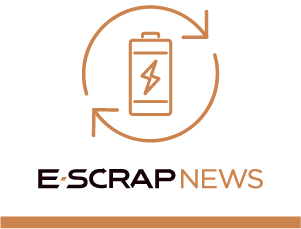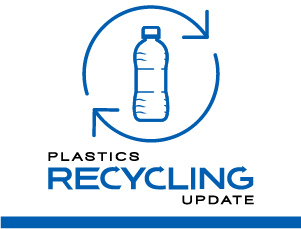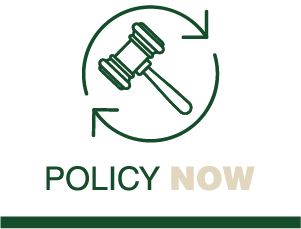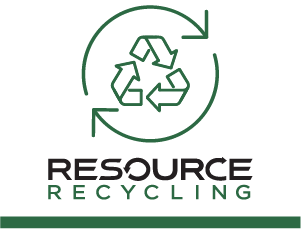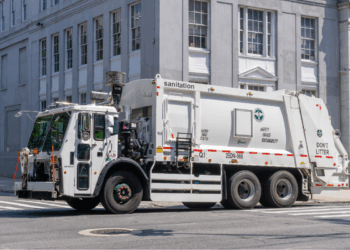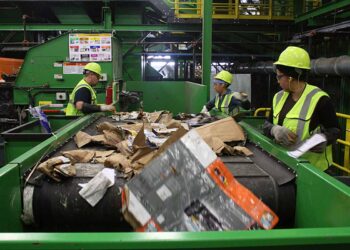Circular Action Alliance submitted its initial extended producer responsibility plan to Colorado’s advisory board, taking another step on the state’s path to implementation.
The plan proposal lays out the details of program operations, including producer compliance tracking methods, the minimum recyclables list, targets for minimum PCR content, collection and recycling rate targets, dues setting methods, reimbursement formulas, composting expansion and reuse and refill plans.
Juri Freeman, executive director of CAA Colorado, said in a press release that collaboration was critical in developing the plan.
“While there are several steps yet to reach a finalized plan, we look forward to driving Colorado’s circular economy through continued collaboration,” he said.
The state Producer Responsibility Advisory Board has 90 days to review the plan and provide feedback. Following that feedback, CAA gets 60 days to respond, after which the plan will be sent to the Colorado Department of Public Health and Environment with the board’s recommendation for either approval or rejection, and a public comment period will open.
Colorado’s EPR program is slated to fully roll out in 2026. Current budget estimates show costs of up to $267 million through 2026, up to $298.9 million in 2027, up to $353 million in 2028, up to $380.8 million in 2029 and up to $397.2 million in 2030.
In 2026, additional eco-modulation benchmarks and a bonus schedule will be shared by the Department of Public Health and Environment, and CAA will start paying out bonuses in 2027.
The plan includes a detailed explanation of how dues will be charged to producers, based on material category, volume and eco-modulation factors.
Access expansion work begins next year
The 200-plus page plan uses a medium-level scenario, which state regulators approved in 2024. It comes with a goal of increasing overall recycling rates from an estimated 25% in baseline year 2022 to 41% in 2030 and 55% in 2035.
“Colorado’s recycling infrastructure varies widely across regions and requires tailored investments and solutions,” the report noted. “CAA Colorado will take a phased, adaptive approach to meet the 2030 collection and recycling rate goals that considers regional needs, existing and required infrastructure and gaps in service.”
The approach will include service agreements with public, private and nonprofit service providers beginning in 2026 using existing infrastructure. Work to provide recycling access in rural and underserved areas will also begin in 2026, the report added, “but it might take several years for infrastructure investment to materialize into recycling services for all covered entities.”
Non-residential locations must also be provided recycling service, which the plan noted will begin in 2028 for schools, prior to 2030 for local and state government buildings and public places and in 2030 for hospitality locations and small businesses.
Rates and targets
The overall recycling rate target is also broken down into material-specific rates:
- Paper: 2022 baseline rate 22%, 2030 target of 40% and 2035 target of 58%.
- Cardboard: 2022 baseline rate 45%, 2030 target of 62% and 2035 target of 74%.
- Glass: 2022 baseline rate 30%, 2030 target of 50% and 2035 target of 61%.
- Metals: 2022 baseline rate 37%, 2030 target of 55% and 2035 target of 73%.
- Rigid plastics: 2022 baseline rate 14%, 2030 target of 24% and 2035 target of 42%.
- Flexible plastics: 2022 baseline rate of less than 1%, 2030 target of 2.5% and 2035 target of 3.5%.
As for PCR minimums, they vary by material. The proposed PCR targets are not individual producer targets, the report noted, but rather collective goals.
By 2030, rigid plastic packaging should have 20% PCR, flexible plastic packaging 5% PCR, paper and paper packaging 40% recycled content, metal packaging 40% recycled content and glass 30% recycled content.
The report estimated the following 2024 baseline recycled content rates: rigid plastic packaging, 9% to 11%; flexible plastic packaging, 1% or less; paper and paper packaging, 30% to 40%; metal packaging, 30% to 40%; and glass packaging, 15% to 25%.
Reimbursement details
The plan provides details and formulas for the reimbursement of several different kinds of service providers and service models.
The reimbursement framework is divided into two types of services: collection and post-collection. Collection includes service providers collecting minimum recyclables list and additional recyclables list materials and bringing the materials to transfer stations or processing facilities, such as MRFs. Post-collection is defined as the processing stage, which includes receiving materials, consolidating and transporting them, and sorting or otherwise preparing materials for market.
The collection models eligible for reimbursement are open market or subscription-based services, local government collection services offered directly by municipalities and funded through user fees, property taxes or general funds, and contracted collection.
Costs that are eligible for reimbursement are operating and capital expenses, education and outreach expenses, debt service and tip fees. CAA will do collection cost studies and analyses to assess service agreement costs and incentives at least once per five-year program period, according to the plan.
Covered materials
Items on the minimum recyclables list must be collected statewide “in a manner that is as convenient as the collection of solid waste.” They are:
- Uncoated paper for general use and low-grade printing and writing paper.
- Other printed paper.
- Newspaper, newsprint, magazines and other coated paper.
- Bound directories.
- Packaging paper.
- Corrugated cardboard that is not wax coated.
- Kraft packaging.
- Paperboard boxes and packaging.
- Molded pulp packaging, excluding foodservice ware.
- Gable-top and aseptic cartons.
- Non-metalized gift wrap.
- Clear PET bottles, jars, jugs and lids.
- Clear PET thermoform containers.
- Natural and colored HDPE bottles, jars and jugs.
- Other rigid PE packaging, except pails, lids and squeezable.
- PP rigid packaging, except pails and lids.
- Large HDPE and PP pails and lids.
- Empty steel aerosol containers and steel containers.
- Empty aluminum aerosol containers and aluminum non-beverage and beverage containers.
- Small format metal.
- Clear or colored glass.
Items on the additional recyclables list may be collected in different geographic areas through curbside services, drop-off centers or other means and are eligible for reimbursement. They are:
- Small-format paper.
- Molded pulp foodservice ware.
- Paper cups, coated and uncoated.
- Other polycoated paper packaging.
- Paper laminate.
- Paper cans with steel ends.
- Colored opaque PET bottles, jars, jugs and thermoform containers.
- Other rigid PET.
- PE squeeze tubes.
- LDPE bottles, jugs, jars and other rigid items.
- HDPE colored nursery containers and PP nursery containers.
- White expanded polystyrene.
- LDPE and HDPE film.
- Other metal packaging.
CAA’s goal is to move materials from the additional list to the minimum list “as the overall recycling system improves,” the plan noted.
The PRO plan also addresses how it will invest in composting infrastructure, education and outreach campaigns, contamination reduction and responsible end markets.


